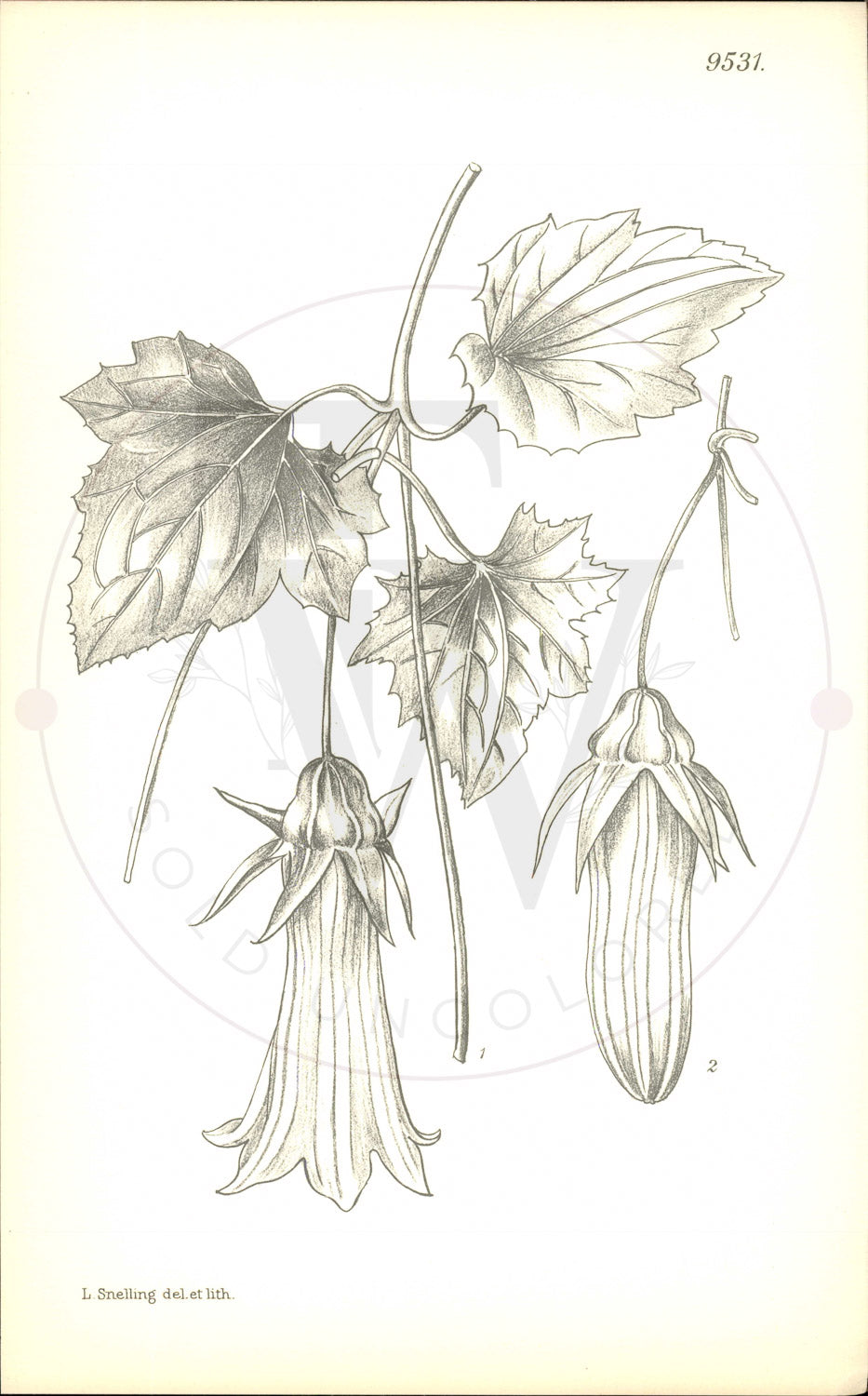Curtis Botanical Magazine
Plate 9531 - Canarina eminii
Plate 9531 - Canarina eminii
Couldn't load pickup availability
Curtis's Botanical Magazine - Plate 9531
Canarina eminii
Family: Campanulaceae • Native Region: Africa • Publication Date: January 1st, 1934
Distribution: -Eastern Africa; Abyssinia, the moun- • Tab Author: B. L. BURTT
Botanical Description
Basket plant in a cool house. The succulent stems, which exude a copious white latex when broken, hang down for 4-5 ft. over the edge of the basket and the large pendulous orange and red flowers make it a far more striking subject than the better known C. canariensis (L.) O. Kuntze (syn. C. Campanula L.-Bot. Mag. t. 444). The stems die back after flowering, and the tubers should then be kept dry until they sprout again, generally in the early spring. In its native haunts in the East African mountains C. Eminii usually grows as an epiphyte in the forest or at the forest edge and has pendulous stems, but on Mt. Moroto and Mt. Rom, in Uganda, it has been found forming clumps in rock-fissures and the stems are then erect. The Cambridge plants were introduced by Mr. P. M. Synge who collected them between 2250 and 2700 metres on the Uganda side of Mt. Elgon. Canarina Eminii has a rather wide range in East Africa. It was discovered by the German collector Stuhlmann on Ruwenzori and the specimen he collected has a rather short, broadly campanulate corolla (see the illustration in Engler's Pflanzenwelt Ost-Afrikas) compared with the plants found on Mt. Elgon which have the corolla cylindric at the base and dilated from the middle upwards. This latter form was named var. elgonensis by T. C. E. Fries and is the one here illustrated. There is no doubt, however, that specimens collected on the Aberdare Mountains also belong to this variety, although Fries only recognised it from Mt. Elgon.
About This Print
Original black and white uncolored botanical print from Curtis's Botanical Magazine (established 1787). This 9000s series print is from unissued publisher stock, never hand-colored, representing the authentic plate as it appeared in the magazine. Edited by Sir Arthur William Hill for The Royal Horticultural Society, London.
Share



